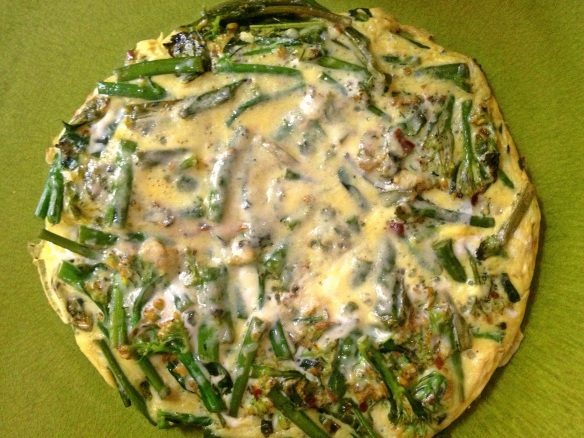A CSA share can be a bit daunting when your household numbers just one. Despite having had folks over for dinner Friday and Saturday, I had yet to plow through last week’s vegetables by the time Tuesday’s pickup rolled around. Digging through my crisper this morning (after a completely unnecessary trip to my local farmers market), I came upon some Happy Rich (aka broccolini) that was looking a bit worse for the wear. The leaves were mostly yellowed and the buds had opened into delicate white flowers. But the stalks were green and crisp, so game on.
- Bring a tablespoon of olive oil up to medium heat in a small nonstick skillet and add a garlic scape sliced into long, thin slivers. (Regular garlic would also work, but ’tis the season of the scape.) Add a pinch of red pepper flakes.
- When the scapes are softened and just starting to brown, add a cup or two (one small bunch) of roughly chopped Happy Rich, starting with the stems, which will take longer to cook. Pour a little water in to help them steam. I recommend aiming for an al dente texture. Stir in the flowers and leaves along with salt and black pepper. Turn the temperature down to medium low.
- Crack two eggs into a cup and mix gently with half an ounce or so of shredded cheese. (I used a youngish aged gouda to great effect.)
- Pour the egg mixture into the pan and stir briefly to ensure even distribution. Sprinkle a little more cheese on top. When the bottom seems to be firm, pop it under the broiler for a couple minutes to set the top.
This was crazy good. Now on to the bok choy, kale, kohlrabi, and Swiss chard that are still in the crisper!

















